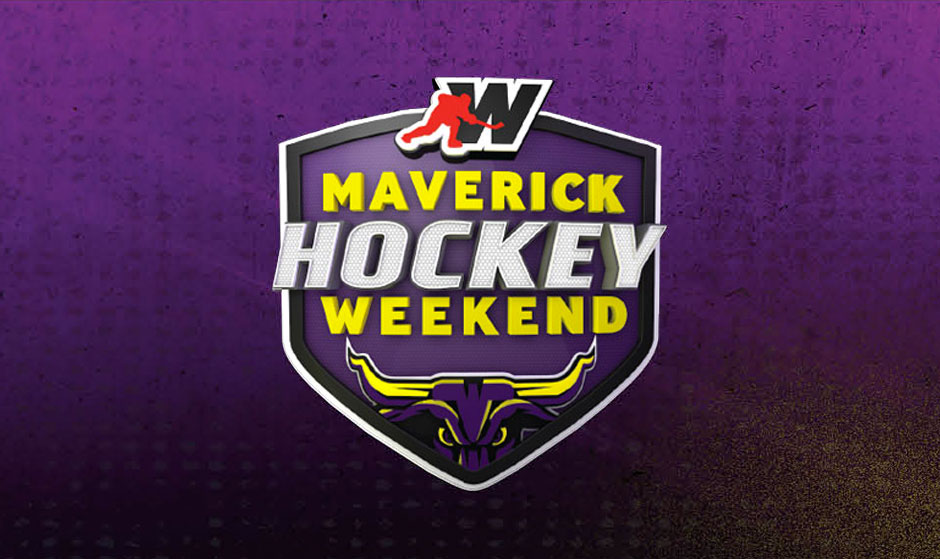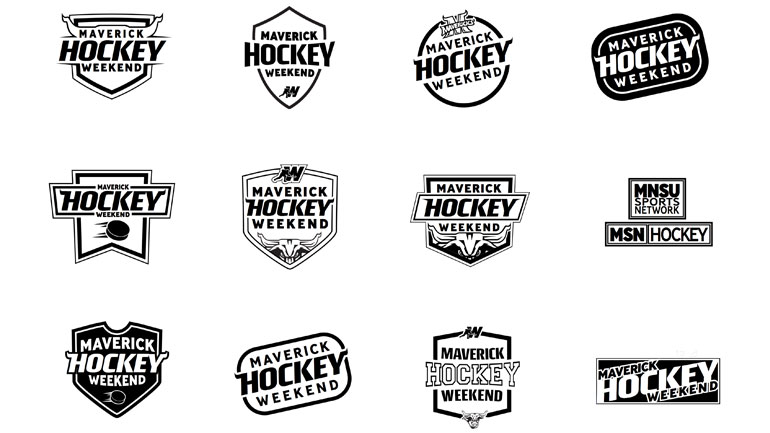Bethany Lutheran College has been contracted to broadcast the Minnesota State University DI Maverick Hockey games for over 15 years. This programming has long been referred to both on and off the air as “Maverick Hockey Weekend”. But to date, there hasn’t been a logo mark beyond the letters “MHW”. We are excited to reveal the new Maverick Hockey Weekend logo which, like the broadcast itself, was created entirely by students.

The logo was designed in a media arts topics course titled Network Branding. The purpose of the course was to introduce students to the design and animation of on-air sports graphics for use during the Maverick Hockey Weekend program. The lead designer was senior Tyler Voigt, a student heavily involved in many aspects of the hockey broadcast. Tyler began the process by creating what surely felt like hundreds of 1-color digital roughs (a few of these roughs are included below). Tyler enjoyed generating a range of options and found the refinement and decision-making process to be the more challenging aspect of this project. Feedback was given by other students in the course, instructor Amanda Quist, and studio manager Greg Vandermause.

“The part that was the most challenging for me was the feedback. However, it did generate some ideas that I would never have thought of my myself. Ultimately, all the feedback was used to craft the 2D base version, and I love how it turned out in 3D. I can’t wait to see this new logo in action everywhere from t-shirts to transitions!”
– Tyler Voigt (designer)
After the 2D design was finalized, Tyler passed it on to senior Hayes Schneider. Hayes used Cinema4D to make the design 3-dimensional and add color/lighting. This version was created for on-screen use and will be seen most frequently.
The logo will be integrated into the broadcast next semester (spring 2018) along with other materials generated by the Network Branding course. This includes a new open and transitions featuring the logo, motion backs, and some match-up animations created for social media. “This topics course was challenging to teach because the students enrolled had very different experience levels with the subject matter, but that’s also what made is so dynamic! In the end, advanced students had the opportunity to produce portfolio-quality work, and several students who had never touched After Effects before worked together successfully to animate their designs,” commented Amanda Quist. “The course was quite complementary to our standing motion graphics coursework, and every student was excited to make things for a real-world client.”







